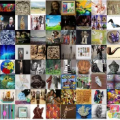Deep convolutional neural networks (CNN) have massively influenced recent advances in large-scale image classification. More recently, a dynamic routing algorithm with capsules (groups of neurons) has shown state-of-the-art recognition performance. However, the behavior of such networks in the presence of a degrading signal (noise) is mostly unexplored. An analytical study on different network architectures toward noise robustness is essential for selecting the appropriate model in a specific application scenario. This paper presents an extensive performance analysis of six deep architectures for image classification on six most common image degradation models. In this study, we have compared VGG-16, VGG-19, ResNet-50, Inception-v3, MobileNet and CapsuleNet architectures on Gaussian white, Gaussian color, salt-and-pepper, Gaussian blur, motion blur and JPEG compression noise models.
翻译:深度神经网络结构的退化效应
深度卷积神经网络(CNN)已经大力推动了大规模图像分类的最新进展。最近,具有胶囊(神经元组)的动态路由算法表现出了最先进的识别性能。但是,在存在退化信号(噪声)的情况下,这种网络的行为大多数未经探索。对于噪声鲁棒性的不同网络结构的分析研究对于在特定应用场景中选择适当的模型至关重要。本文对六种深度架构与六个最常见的图像退化模型上的图像分类进行了广泛的性能分析。在本研究中,我们比较了VGG-16、VGG-19、ResNet-50、Inception-v3、MobileNet和CapsuleNet架构在高斯白色、高斯色彩、椒盐、高斯模糊、运动模糊和JPEG压缩噪声模型上的表现。


